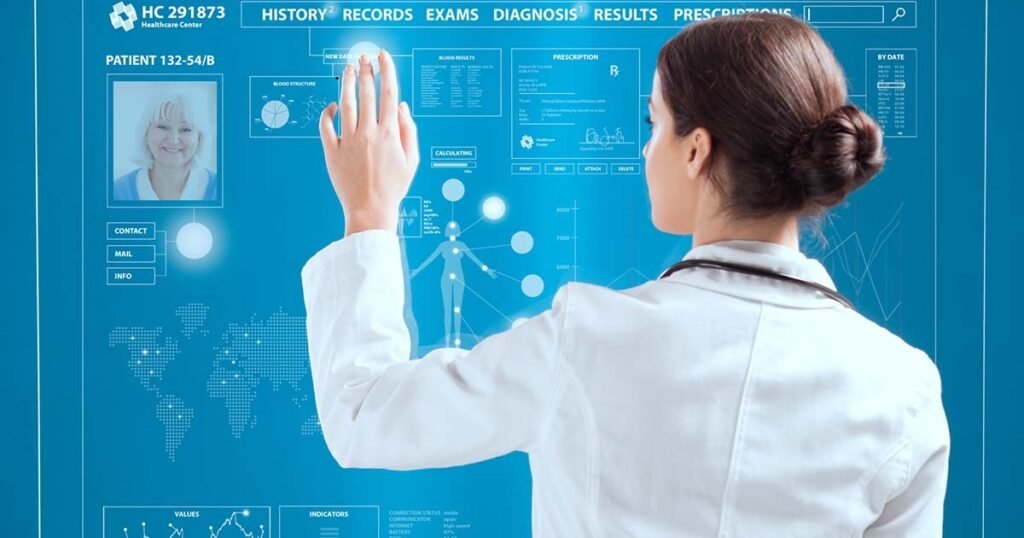Digital transformation in healthcare is no longer an option – it’s a necessity, albeit a daunting one that requires careful planning and guidance. Healthcare leaders must navigate a vast and interconnected technology landscape that includes artificial intelligence, digital twins, blockchain, “smart dust” (miniature sensors) and various foundational infrastructure components, including wireless networks, cybersecurity, back-end resources and peripheral components – all while ensuring compliance with multiple regulations.
So how can organisations prioritise and strategise their digital transformation journey?
A structured approach to digital advancement
“You don’t have to reinvent the wheel,” Dr. Raed AlHazme, executive director of the IT department at the Ministry of National Guard Health Affairs in Saudi Arabia, said. “You could just follow the wheel that has been invented a long time ago and has been refined over and over by expertise from the de facto digital health organisation in the world.”
AlHazme is referring to Healthcare Information and Management Systems Society (HIMSS) maturity models, used by many healthcare providers to implement digital capabilities successfully. HIMSS has developed six maturity models, each addressing different aspects of healthcare digitalisation and providing organisations with clear benchmarks to understand their current position and plot their path forward:
– Electronic Medical Record Adoption Model (EMRAM): Assesses the adoption and use of EMRs to support patients and clinicians.
– Adoption Model for Analytics Maturity (AMAM): Measures analytics and data governance, aiding in real-time insights and AI adoption.
– Infrastructure Adoption Model (INFRAM): Helps improve technology infrastructure to meet international standards.
– Community Care Outcomes Maturity Model (C-COMM): Evaluates digital maturity across community-based, non-acute treatments.
– Digital Imaging Adoption Model (DIAM): Supports the optimization of digital imaging processes.
– Community of Care Maturity Model (CCMM): Assesses the coordination of patient care across multiple sites and settings.
King Abdulaziz Medical City in Riyadh, Saudi Arabia, consists of several facilities. Under AlHazme’s leadership, the medical center has achieved remarkable digital maturity, with several facilities reaching HIMSS’ highest maturity levels for EMRAM, AMAM, INFRAM, DIAM and C-COMM, which achieved the first global Stage 6 level in 39 of their clinics.
Which model should you use first?
The model to adopt first depends on the individual hospital’s services. For hospitals with limited resources, AlHazme recommends beginning with EMRAM if the focus is on inpatient services and emergency care. However, for organisations primarily providing outpatient services, such as haemodialysis centres or nursing homes, he suggests starting with C-COMM.
For specialised facilities, AlHazme recommends tailoring the approach further: “If they are heavily dependent on imaging, let’s say a cardiac centre, it would be more appealing for them to go with DIAM than AMAM, because cardiac relies heavily on cath labs, cardiac CT and cardiac MRI.”
Key to success: Maintaining momentum
The key to successful implementation, according to AlHazme, lies in maintaining momentum and securing proper mandates. “In healthcare organisations, it’s difficult to change things, and it’s understandable – everyone is busy with patients,” he noted. The structured nature of the HIMSS maturity models helps create and sustain momentum, as stakeholders become invested in progressing through each level, he added.
AlHazme particularly values how the HIMSS maturity models provide implementation authority: “It really gives you the power to get everyone’s cooperation,” he said. “Compared to coming out of the blue without any structure or external mandate, these models provide a clear framework for change.”
The key benefit of a structured approach to digital transformation that the HIMSS maturity models provide is that they enable institutions to benchmark and measure their current state of digitalisation and recalibrate every time they finish a level on the scale of 1 to 7. “Every time you finish a model, you get a holistic overview of the state of digital transformation and can clearly see the areas where you still have gaps or you’re lagging in digital maturity,” he concluded.
The HIMSS maturity models will be presented at HIMSS Europe 2025 in Paris, taking place June 10-12, in a dedicated Digital Maturity Roadmaps track. Participants will also be able to get more information and samples of digital maturity model assessment questionnaires. See the full program.


